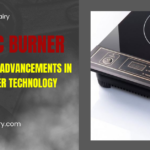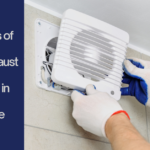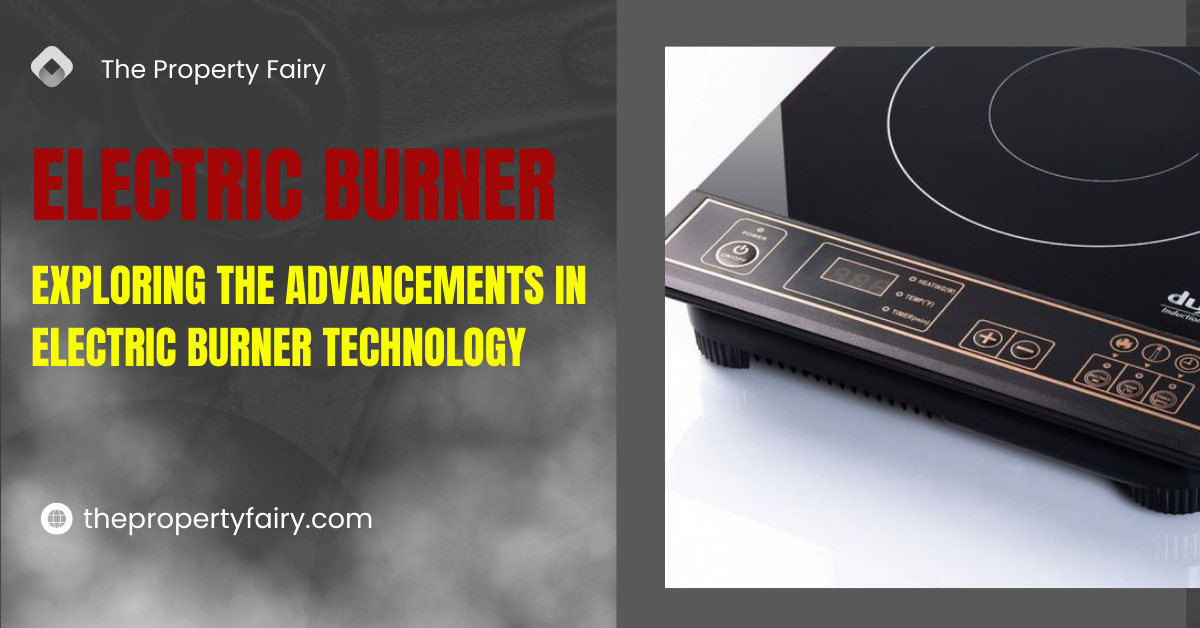Electric burners are kitchen appliances that provide a convenient way to cook or heat food using electricity. They are commonly found in stovetops or standalone hot plates and are an alternative to traditional gas burners. Electric burners consist of heating elements that generate heat when electricity passes through them, allowing you to cook your favorite dishes with ease.
Brief History of Electric Burners
The concept of electric burners dates back to the late 19th century when electricity started becoming more accessible to households. However, it wasn’t until the early 20th century that electric burners began to gain popularity. The invention of electric stoves revolutionized cooking by eliminating the need for open flames and offering a safer and more controlled cooking experience. Since then, electric burners have undergone significant advancements in terms of efficiency, safety features, and design.
How Electric Burners Work
Understanding the Basic Components
Electric burners consist of two essential components: the heating element and the control mechanism. The heating element is usually a coil or a flat surface made of a conductive material such as metal or ceramic. When electricity flows through the heating element, it generates heat, which is then transferred to the cookware on top.
Heat Generation in Electric Burners
Heat is generated in electric burners through electrical resistance. When an electric current passes through the heating element, the resistance within the material causes it to heat up. This heat is then spread evenly across the cooking surface, providing a consistent source of heat for cooking. Electric burners serve as a practical solution for expanding your cooking space heater.
Control Mechanisms in Electric Burners
Electric burners offer various control mechanisms to adjust the heat settings. These mechanisms can include simple temperature knobs, touch controls, or digital displays with precise temperature settings. The control mechanisms allow users to regulate the heat output, allowing for precise cooking and temperature control.
Advantages of Electric Burners
Energy Efficiency
Electric burners are generally more energy-efficient compared to gas burners. They heat up quickly and transfer heat directly to the cookware, reducing heat loss. Electric burners also distribute heat evenly across the cooking surface, ensuring that food cooks more efficiently.
Even Heat Distribution
One significant advantage of electric burners is their ability to provide even heat distribution. With gas burners, the heat tends to concentrate more in certain areas, leading to uneven cooking. Electric burners, on the other hand, distribute heat evenly across the entire cooking surface, resulting in consistent and properly cooked meals.
Safety Features
Electric burners come with built-in safety features such as automatic shut-off timers and overheating protection. These features help prevent accidents and ensure that the burners are safe to use. Electric burners also eliminate the need for an open flame, reducing the risk of gas leaks and potential fire hazards.
Types of Electric Burners
Coil Electric Burners
Coil electric burners are the most traditional and commonly found type. They feature spiral-shaped heating elements made of metal that become red-hot when in use. These burners are durable and provide consistent heat, making them suitable for various cooking tasks.
Smoothtop Electric Burners
Smoothtop electric burners have a sleek and flat ceramic or glass surface. They are easy to clean and provide a modern look to your kitchen. Smoothtop burners heat up quickly and evenly, making them ideal for quick and efficient cooking.
Induction Electric Burners
Induction electric burners use electromagnetic technology to heat the cookware directly instead of the burner surface. They are highly efficient, heat up quickly, and provide precise temperature control. Induction burners are also safer to use as they only heat the cookware and not the surrounding surface, reducing the risk of accidental burns.
- Considerations for Home Use
When it comes to choosing an electric burner for your home, there are a few key factors to keep in mind. First, think about your cooking needs. Do you require a single burner or multiple burners? Are you looking for a portable option or one that is permanently installed in your kitchen? Consider the size of the burner as well, making sure it fits your countertop space. You may also visit answertenant for more information.
Commercial Applications
For those in the foodservice industry or any commercial setting, the requirements for an electric burner may differ. You’ll want to consider factors such as durability, power output, and the ability to handle heavy usage. Look for burners that are specifically designed for commercial applications to ensure they can meet the demands of your business.
Features to Look for
When shopping for an electric burner, there are a few features that can enhance your cooking experience. Look for burners with adjustable temperature control so you can easily achieve your desired heat level. Safety features like overheating protection and automatic shut-off can provide peace of mind. Additionally, some burners come with a built-in timer or indicator lights to help you keep track of your cooking.
Safety Considerations
Fire and Burn Prevention
Safety should always be a top priority when using electric burners. To prevent fires and burns, avoid placing flammable items near the burner and never leave it unattended while it’s in use. Use caution when handling hot cookware and always use oven mitts or pot holders to protect yourself.
Electrical Safety
Electricity and water don’t mix, so it’s important to keep your electric burner and its cord away from any liquid. Make sure the plug is properly inserted into a grounded outlet and avoid using extension cords if possible. Regularly inspect the cord for any signs of damage, and if you notice any, discontinue use and have it repaired or replaced.
Safe Handling and Operation
When operating an electric burner, always follow the manufacturer’s instructions. This includes properly assembling and disassembling the burner, ensuring it is clean and free from any food debris or spills. Never touch the burner surface while it’s hot, and wait for it to cool down completely before cleaning or storing it.
Maintenance and Cleaning Tips
Regular Cleaning and Maintenance
To keep your electric burner in good working condition, regular cleaning is essential. After each use, allow the burner to cool down and then wipe it with a damp cloth or sponge. Avoid using abrasive cleaners or steel wool, as they can scratch the surface. Make sure to also clean any spills or food debris that may have dripped onto the burner.
Removing Stubborn Stains
If you encounter stubborn stains or residue on your electric burner, there are a few methods you can try. You can create a paste using baking soda and water and gently scrub the stain with a soft cloth. Another option is to use a mild abrasive cleaner specifically designed for cooktops, following the instructions on the product.
Replacing Faulty Parts
If you notice any issues with your electric burner, such as a malfunctioning control knob or a burner that doesn’t heat evenly, it may be necessary to replace faulty parts. Check the manufacturer’s website or contact their customer service for guidance on ordering and replacing the specific components.
Troubleshooting Common Issues with Electric Burners
Burner Not Heating
If your electric burner isn’t heating up, there could be a few reasons why. First, check if it’s properly plugged into a functioning outlet. If it is, inspect the cord for any damage. Additionally, the heating element may need to be replaced if it is worn out or damaged. Consider consulting a professional if you’re unsure or if the issue persists.
Uneven Heat Distribution
Uneven heat distribution can be frustrating when cooking. To address this issue, make sure your cookware is flat and sits securely on the burner. Adjust the temperature settings and consider using a heat diffuser to distribute the heat more evenly.
Electrical Malfunctions
If you experience any electrical malfunctions with your electric burner, such as sparks, unusual noises, or tripping circuit breakers, stop using it immediately and have it inspected by a professional. Electrical issues can be dangerous, so it’s important to address them promptly and avoid any potential hazards.In conclusion, electric burners offer a reliable and efficient solution for cooking and heating food. With their various types and features, they provide versatility and convenience in the kitchen.
By understanding how electric burners work, considering their advantages, practicing safety precautions, and following proper maintenance guidelines, you can enjoy the benefits of these appliances for years to come. Whether you’re cooking a family meal or operating a busy restaurant kitchen, electric burners are a valuable addition that simplifies the cooking process. Embrace the power of electric burners and elevate your culinary experience with their reliable performance and modern features.
FAQs
Are electric burners better than gas burners?
Electric burners have their advantages over gas burners. They offer more precise temperature control, even heat distribution, and are generally safer to use. Additionally, electric burners are easier to clean and maintain compared to gas burners. However, personal preferences and specific cooking needs may vary, so it’s important to consider your requirements before making a decision.
Can I use any cookware on electric burners?
Most types of cookware can be used on electric burners. However, for induction electric burners, a specific type of cookware with a magnetic bottom is required. Induction burners rely on magnetic fields to transfer heat, so non-magnetic cookware, such as aluminum or copper, will not work. It’s always recommended to check the manufacturer’s guidelines for compatibility before using cookware on electric burners.
How do I clean an electric burner?
Cleaning an electric burner is relatively straightforward. For smoothtop electric burners, allow the surface to cool down completely, then wipe away any spills or stains with a non-abrasive cleaner and a soft cloth. For coil burners, remove the coils and drip pans, wash them with warm soapy water, and scrub away any residue. It’s important to follow the manufacturer’s cleaning instructions and avoid using abrasive materials or harsh chemicals that can damage the burners.
What should I do if my electric burner is not heating properly?
If your electric burner is not heating properly, there could be a few reasons. First, check if the burner is securely plugged in and the power source is functioning. If the burner is receiving power but still not heating, it could be a faulty burner element or a control issue. In such cases, it’s recommended to consult the user manual or contact a professional for troubleshooting and repair.












